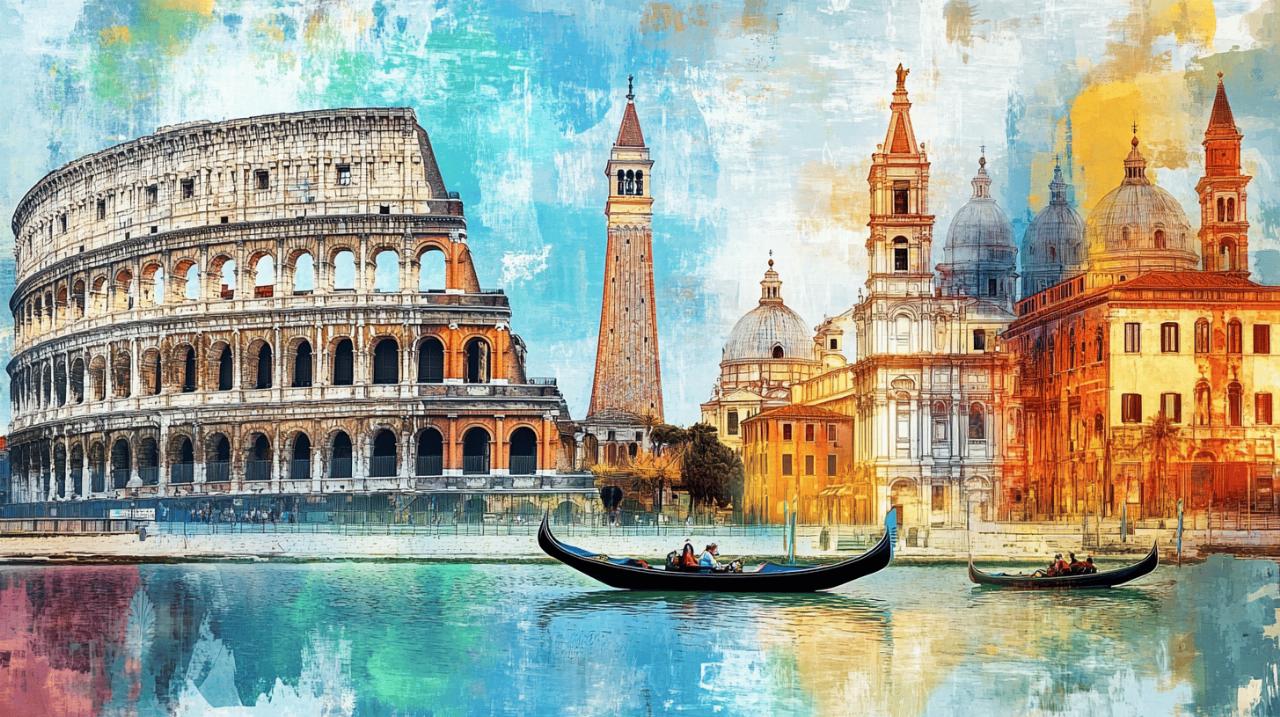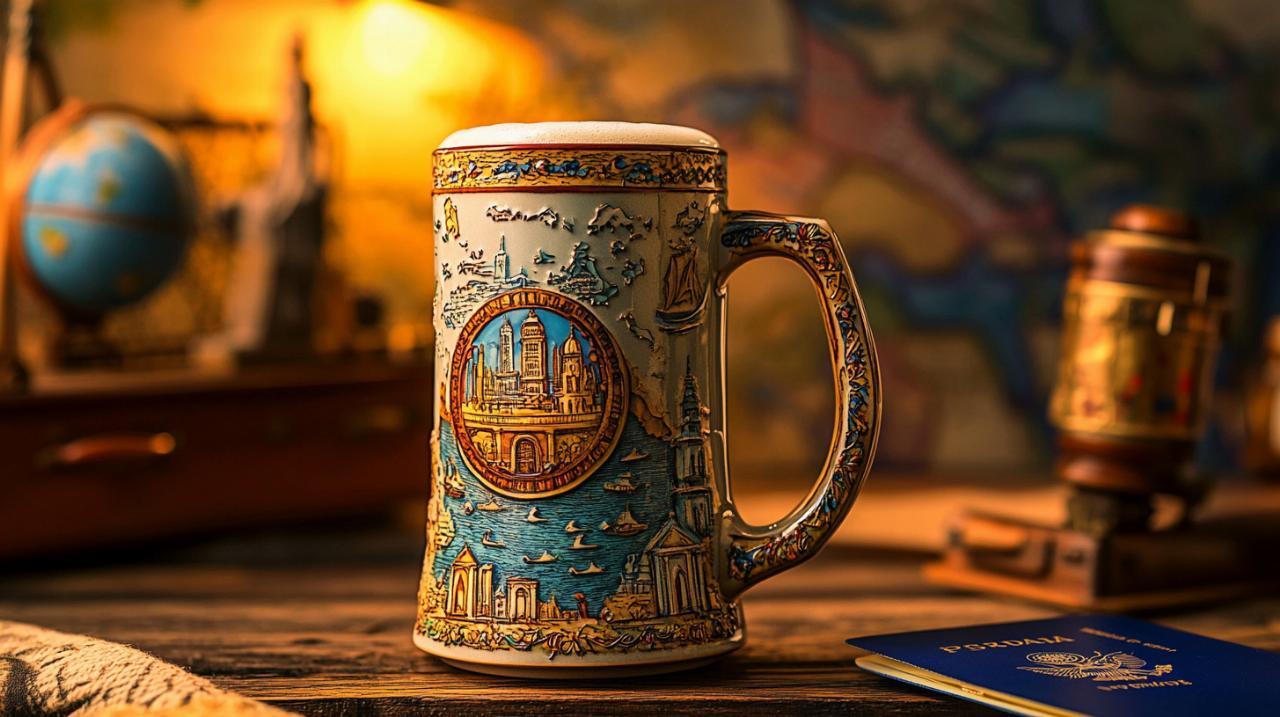Cultural travel opens up a world where history whispers from ancient stones, art speaks through centuries-old masterpieces, and local traditions come alive through authentic experiences. Whether you're wandering through the sun-drenched piazzas of Italy or exploring distant shores across the globe, cultural travel offers a deeper connection with the places we visit and the people who call them home.
Treasures of Italy's historical landscape
Italy stands as an unrivalled destination for cultural enthusiasts, offering an extraordinary density of historical and artistic wonders within its borders. The Ameropa travel collection highlights Italy as one of their most sought-after destinations, with good reason. From the southern shores of Sicily to the northern canals of Venice, each region unfolds its unique cultural narrative while maintaining that distinctive Italian spirit that travellers adore.
Ancient Roman archaeological wonders
The Italian peninsula serves as an open-air museum of Roman civilisation, with ruins that transport visitors back to the empire's golden age. Rome itself presents the iconic Colosseum and Forum, where visitors can walk the same paths as ancient senators and gladiators. Beyond the capital, lesser-known sites offer equally profound experiences without the crowds. The remarkably preserved ruins of Pompeii and Herculaneum near the Amalfi Coast provide an intimate glimpse into daily Roman life, frozen in time by the eruption of Mount Vesuvius. Sicily offers the Valley of Temples in Agrigento, where Greek and Roman influences merge in spectacular fashion under Mediterranean skies.
For those seeking to combine coastal beauty with cultural exploration, tours along the Amalfi Coast typically range from £1149 to £3199, offering access to both natural splendour and historical treasures. Expert guides specialising in ancient history can transform these archaeological visits from mere sightseeing into genuine historical journeys.
Renaissance art capitals and their masterpieces
The Renaissance fundamentally reshaped Western culture, and nowhere is this more evident than in the art capitals of Italy. Florence stands as the movement's spiritual home, where the Uffizi Gallery houses masterpieces by Botticelli, Leonardo, and Michelangelo. Beyond famous museums, cultural immersion can be found in local markets like Sant'Ambrogio, where Florentine life unfolds authentically away from tourist hotspots.
Venice offers its own artistic legacy, with the Academy Gallery showcasing Venetian masters while the city itself serves as a living artwork. The Cannaregio district provides a perfect setting for experiencing local customs like the 'Aperitivo' ritual accompanied by 'Cicchetti' small plates. In Milan, culture takes a contemporary turn in the fashion districts of Montenapoleone and Corso Como, where travellers can engage with Italy's modern creative expressions through fashion workshops and design tours.
Cultural immersion beyond Italian borders
While Italy may dominate European cultural tourism, expanding your horizons to other destinations reveals the remarkable diversity of human cultural expression. Travel operators specialising in cultural experiences, like those featured in Ameropa travel guides, now offer expertly curated journeys across six continents, each promising unique perspectives on art, history, and living traditions.
European cultural hotspots worth exploring
Europe offers a tapestry of cultural experiences that complement an Italian journey. Spain presents its own artistic giants through the works of Gaudí in Barcelona and the masterpieces of the Prado in Madrid, while smaller cities like Granada showcase the fascinating intersection of Christian and Moorish influences. Germany combines medieval charm in cities like Rothenburg with the cutting-edge contemporary art scenes of Berlin.
Croatia has emerged as one of the most popular European destinations for cultural travellers, offering remarkably preserved Roman architecture in Split, the medieval walled city of Dubrovnik, and a thriving festival culture. The country presents a fascinating case study in how diverse cultural influences from Italian, Austrian, and Balkan traditions have created something uniquely Croatian.
For those planning extended cultural journeys, combining multiple regions offers the richest experience. A typical European cultural tour might range from 8 days for a focused exploration of a single country to 15 days for a broader regional experience, with prices typically starting around £1,649 for quality guided experiences with expert speakers.
Unique cultural traditions across different continents
Venturing beyond Europe reveals cultural expressions that challenge and expand Western perspectives. Japan has become a cultural tourism powerhouse, offering visitors the chance to engage with both ancient traditions like tea ceremony and cutting-edge contemporary art on islands like Naoshima. Cultural tours to Japan often focus on the intersection of aesthetics, spirituality, and daily life that makes Japanese culture so distinctive.
India presents perhaps the most diverse cultural landscape on earth, with regional traditions varying dramatically across the subcontinent. From the palaces of Rajasthan to the ancient temples of Tamil Nadu, cultural tours in India often focus on specific regions to allow for deeper understanding. Car rentals with knowledgeable local drivers in South India, for instance, provide access to temple complexes and cultural sites beyond the reach of standard tours.
North African nations like Morocco and Tunisia offer cultural experiences that blend Arab, Berber, and European influences. Medinas and souks provide immersive settings where traditional craft techniques remain vital parts of contemporary life. Food tourism has become increasingly central to cultural travel, with regional specialities serving as delicious gateways to understanding local traditions and agricultural practices.
Whether exploring Italy's cultural treasures or venturing to distant shores, the most rewarding cultural travel experiences come through genuine engagement with local communities and traditions rather than passive observation. Small group travel, typically comprising 10-22 participants, allows for this deeper connection while providing the insights of expert guides who can illuminate the historical and artistic significance of each destination.





